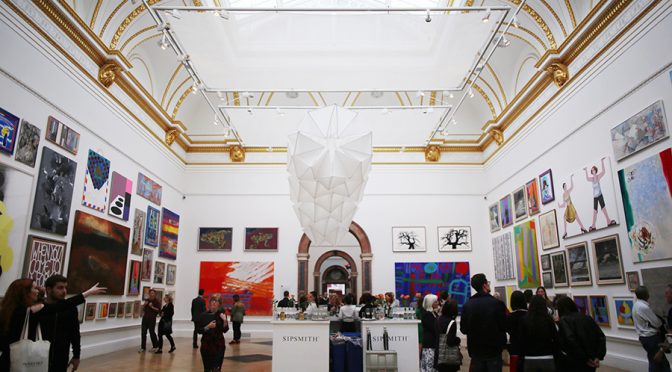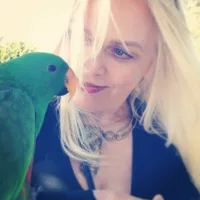Over the years artists have asked me if a gallery would possibly accept their work. This question has been asked by recent art graduates, the self-taught, or from artists abroad looking for US representation. Although trends may change, the basics of the business have not.
Galleries will always look at the body of your work for consistency in quality and style. Not every painting will be a masterpiece, but poor or inconsistent techniques are the marks of the unprofessional. This is why a gallery will want to see the work in person and rarely sign an unfamiliar artist based on slides or digital images.
You will need at least a dozen completed paintings to demonstrate, through color or theme, that all the works represent a single vision. Although your paintings should not be identical, your authentic voice must show through regardless of your subject.
New artists often make the mistake of trying to show off their versatility: a portrait in Rembrandt’s style, a landscape in the style of Turner, an Impressionistic still life, etc. This will only signal to the gallery owner that you have no style or voice of your own.
Your true authentic voice is the only style you need in the arts. Ask yourself who are you at your core? What do you love and how does your work contribute to, or alter the viewer’s perception of the world? If at your core you are funny, then be funny. (You may not be a fine artist but would have great success as an illustrator). If you truly love nature then paint landscapes. However, if you have never been outside of a city, do not try and pass yourself off as a landscape painter.
Persona will not pass as passion: your lies will reveal themselves in your work. You must know who you are and why you paint before anyone will buy a ticket on your career journey. Once you have integrated your head and heart with your work, you will need an “Artist Statement” for the gallery.
The Artist Statement can be for a body of work or for a lifetime. It gives a purpose to your efforts. It also gives the gallery a hook, something to explain your work and to sell your work. It will also help draw patrons that are of like mind to you. Have you ever browsed an online dating site? If so, you first read the personal profile posted along with the photo before deciding to hook-up. Your Artist Statement is similar when determining a hot or not scenario with your work. It will also keep you on track when preparing for an exhibit. With each drawing or study you can ask yourself if this work falls into what you are trying to communicate.
It is important to know that a gallery may actually love your work but not want to represent you. Your art may not fit with their client base and they know from experience they will not be able to sell it. Imagine going into a lingerie store to buy a special little something. The storeowner brings out yards of beautiful upholstery fabric. It may be lush and exquisite, but it really isn’t what you came in for. Gallery owners know their client base and what those clients want. If they hung your work just because you think you’re special, trust me, it would not sell.
Years ago I took gallery and museum management classes at the College of Marin in Kentfield, California. Every month for three years we were required to choose an exhibit theme, advertise, review work, choose the art, handle insurance, hang and light each exhibit, and then promote it. The gallery represented the work of professional artists, not students.
The gallery would advertise a theme for an upcoming exhibit. For example, “Landscapes of California National Parks”. Without fail, a handful of artists would submit art completely off theme: paintings of starving children in Africa or Indian elephants. If you apply to a juried group exhibit or competition, you must only submit work on its theme. Competitions are curated by gallery owners and museums. They will remember you, but for the wrong reason.
On a similar note, if you submit your work for a national or international competition your paintings may be rejected for absolutely nothing to do with your skill level. Often a theme or pattern emerges in a group show. It may be because of an issue on everyone’s mind. For whatever reason, it does happen. I entered the BP Portrait Award at the National Portrait Gallery in London a few years ago. The BP is an international competition and work is not chosen by digital imagery and must be shipped to London and judged in person. As a curator, I have seen the mystery of themes emerging when judging works in person. My painting was rejected. When the winners were published I laughed out loud! My work had been filled with a burlesque joy, mystical and sexy. Everyone else seemed to have painted a dying parent or a homicidal spouse. It was the heaviest, saddest, darkest palette exhibit I had ever seen. Your work may not get in, but often (as in the College of Marin Gallery), good work is noted for upcoming exhibits and details are kept on file.
If you are a self taught artist, clients and galleries will look for professional dedication to your craft, usually at least ten years. Your résumé should indicate steady growth. This means entering local, state, national, and international competitions. It should indicate where you have been selling your work, perhaps craft fairs or online. Do not be insulted. People want to know you are committed to your art before investing in you.
Galleries do not want decorative art, or what is curtly referred to as “OTC”. “Over the Couch” is defined as work bought to match the room. Decorative work is used in commercial spaces, hotels, hospitals, and model homes. It is sold via decorators or art licensing sites, not art galleries. They include pleasant scenes, flowers, puppies, and children and are usually sentimental in nature. They have their own market.
A few other things that might sabotage your chance of gallery representation include:
- Signing your work with a giant signature. Translation: giant signature equals giant ego. No thank you.
- Copying or stealing other peoples imagery.
- Showing your tools. The giant brush you used for painting your house to paint trees is not painting a forest. It looks like you used a giant brush from painting your house.
- Know the rules before you try and bend them. If you can’t draw and take shortcuts, it shows. Distorted perspective from using multiple photos become obvious to the viewer. And of course, if you only paint heads it becomes clear you have not studied art anatomy enough to add a body, feet or hands.
“Always remember there will always be a thousand people better than you as a painter and a thousand people worse. Just do the best you can and do not compare yourself.” Uriél Dana
——-
Featured Image: The Royal Academy Summer Exhibition, London, 2016

